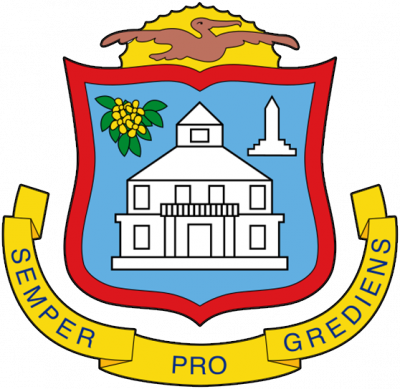The flag of Sint Maarten was officially adopted on June 13, 1985. The flag consists of two equal horizontal stripes of red and blue, separated by a white triangle at the hoist. In the center of the white triangle is the coat of arms of Sint Maarten.
The flag of Sint Maarten was officially adopted on June 13, 1985. The flag consists of two equal horizontal stripes of red and blue, separated by a white triangle at the hoist. In the center of the white triangle is the coat of arms of Sint Maarten.

The coat of arms of Sint Maarten includes several symbols that reflect the history, culture and natural environment of the island:
The island was discovered by Christopher Columbus during his second voyage to the New World on November 11, 1493, the day of St. Martin of Tours, after whom it was named. Sint Maarten was originally inhabited by indigenous peoples such as the Arawaks and Caribs, who lived here long before the arrival of Europeans.
European colonization of the island began in 1631, when the Dutch established their first permanent settlement on the island and built Fort Amsterdam. Over the following decades, the island changed hands between the Dutch, Spanish, French and British until it was finally divided between the Netherlands and France in 1817.
The history of Sint Maarten's flag is part of its colonial heritage and national identity. From the time of colonization by the Dutch until the island gained its autonomy, it used the flags of the metropolis. The flag of the Netherlands remained the official flag.
However, with the attainment of autonomy in 2010 as part of the Kingdom of the Netherlands, Sint Maarten adopted its own flag to symbolize its new status. The flag of Sint Maarten was approved on June 13, 1985.